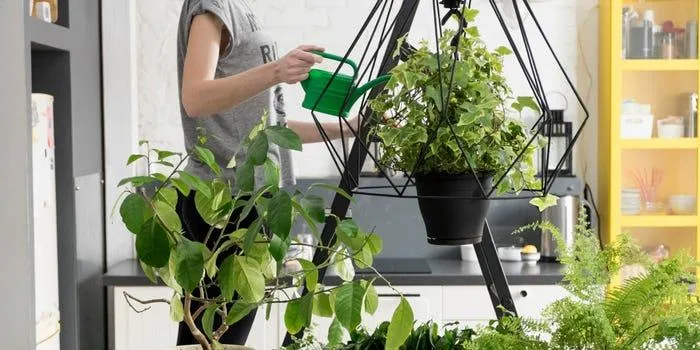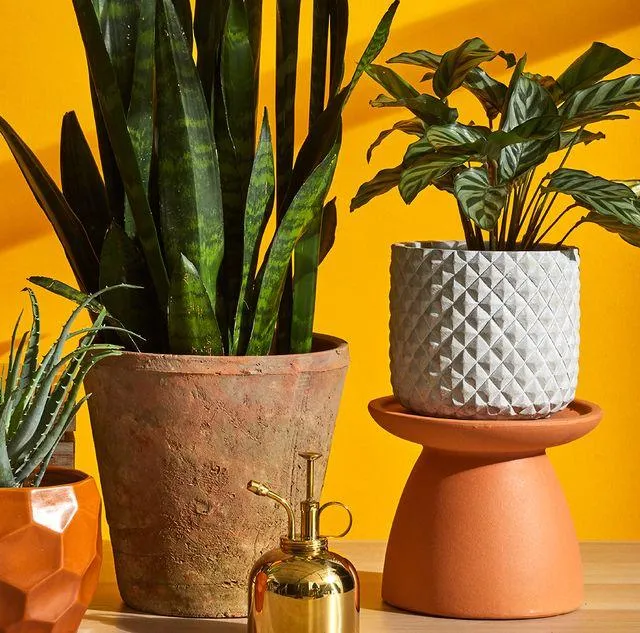The Best Small Hanging Plants for Your Home
Whether you have limited space or just want to add some greenery above eye level, indoor hanging plants are a great option. They allow you to utilize vertical surfaces while adding beauty and life to your interior. In this article, I’ll discuss some of the best small hanging plant varieties to consider, as well as tips for care and display.
Pothos
Pothos, aka Devil’s Ivy, is one of the most popular and easiest indoor hanging plants. With its heart-shaped leaves and trailing vines, it’s perfect for draping over the edge of a hanging basket or pot. Pothos tolerates low-light conditions very well and is quite forgiving of neglect. It trails beautifully but you can also train it to grow vertically on a support.
From my experience, pothos is tough as nails. I’ve forgotten to water mine a time or two and it bounced right back without issue. It also does well in average home temperatures and humidity levels. Make sure the soil dries slightly between waterings. Pothos is low maintenance and thrives on neglect, making it a good choice if you’re busy or forgetful.
Philodendron
Like pothos, philodendron is hardy, easy to care for, and thrives in low light. Some popular varieties for indoor hanging include heartleaf philodendron, Brazilian philodendron, and burgundy philodendron. They have gorgeous lobed or heart-shaped leaves in shades of green and sometimes red or pink.
Philodendron vines are slower growing than pothos but just as easy. Water when the top inch of soil is dry. With its ability to tolerate low light and lower humidity, philodendron is a great choice if you’re new to plant care or want something low maintenance. Over time it will add dramatic fronds of foliage dangling above your space.
English Ivy
With its small, dark green leaves that take on shades of yellow and red in winter, English ivy lends itself beautifully to spilling over the edges of hanging baskets and pots. It thrives in medium to low light and is very forgiving of dry conditions.

One thing to note with English ivy is that it can be more prone to spider mites than other trailing plants. So keep an eye out for tiny webs or spots on the leaves. A thorough spray with water or neem oil should keep the pests at bay. Other than that, this plant is nearly impossible to kill and makes a lovely, full hanging accent.
Spider Plant
With strappy green leaves and frequent offsets that sprout little plantlets on long stems, spider plants (aka mother-in-law’s tongue) add textural interest to hanging baskets. They do well in medium to low light and average indoor temperatures.
Spider plants are easygoing as long as you don’t let the soil remain soggy. I water mine about once a week. If it’s looking dry, give it a drink. Like pothos and philodendron, spider plants are very forgiving of the occasional neglect or dry spell. And they’re perfect if you want a drooping cascading plant to soften harsh corners.
Petunias
For a pop of colorful blooms, consider petunias. Their trumpets of red, pink, purple, and white brighten any space. For indoor use, look for varieties labeled “hanging basket petunias” which are more compact. They thrive in medium to bright light.
Although annuals, petunias bloom continuously for months when grown indoors. Just water regularly and feed weekly with a dilute liquid fertilizer. Deadhead spent blooms to prolong flowering. Place petunia baskets somewhere they’ll catch your eye like over a table for an instant decorative lift.
Tips for Display and Care
Choose the Right Spot
For trailing plants to thrive, pick a spot that gets at least four to six hours of indirect light daily. Southern windows, east windows, or bright interior spaces work well. Avoid direct west sun which can scorch leaves.

Use Appropriately Sized Containers
Make sure to pot hanging plants in baskets, pots, or hooks suited to their mature sizes. Crowding plants in too small a container can stunt growth. But very large pots can get heavy when soaked, risking pulled hooks or damage to your ceiling. Find the right balance.
Water Appropriately
When plants are in hanging baskets, water will drain through more quickly than soil-filled pots. Check soil daily and water thoroughly whenever the top inch feels dry. Trailing plants like pothos and ivy are very forgiving of dry spells between waterings.
Fertilize Periodically
Every few weeks during the growing season, supplement regular waterings with a diluted liquid houseplant fertilizer. This provides nourishment for ongoing growth and lush foliage. Follow label instructions for correct strength.
Prune for Shape
To encourage a full habit, remove any straggly or leggy growth from the center of plants and along the edges periodically with clean pruning shears. Cut back to a strong set of leaves or stem. This keeps plants looking full and bushy.
Repot Annually as Needed
Only repot indoor hanging plants if their roots have completely filled the container. Gently tip out of the pot and transplant up one size using a well-draining potting soil. Cut any seriously rootbound roots before repotting.
Display in Groups
For the most impact, hang baskets and pots of trailing plants in clusters rather than singly. Arrange short ones in front, taller in back. This allows their foliage to mingle attractively rather than sitting alone and exposed. A few different plant varieties together look particularly nice.

So in summary, consider English ivy, pothos, philodendron, spider plants or petunias for their ease of care. With the right spot, watering, fertilizer and pruning, small indoor hanging plants can add life and beauty to your home for years to come. Let me know if you have any other questions!
Small Indoor Hanging Plant Options
| Plant | Light | Water | Size | Care Level |
|---|---|---|---|---|
| Pothos | Low | Moderate | Small to Medium | Easy |
| Spider Plant | Low to Bright | Allow soil to dry between waterings | Small | Easy |
| Philodendron | Low to Bright | Moderate | Small to Large | Easy |
| English Ivy | Low to Bright | Moderate | Trail up to 3 feet | Easy |
| Peperomia | Bright Indirect | Moderate | Small | Easy |
| Maranta | Bright Indirect | Moderate | Medium | Moderate |
FAQ
-
What kind of small plants are good for indoor hanging baskets?
There are mainly a couple varieties that do basically okay hanging up inside. Plants like pothos and philodendron are very low maintenance and can grow pretty much anywhere. Spider plants are also a good choice since they’re very hardy.
-
How often do I need to water a hanging plant?
It depends on the kind of plant, but generally hanging plants will need water every 7-10 days. The soil should be allowed to dry out somewhat between waterings, otherwise the roots might rot. You can stick your finger in the soil and see if it’s dry about an inch down. At the same time, don’t let them dry out completely either.
-
What is the best potting mix for hanging baskets?
Most people will use a typical houseplant potting soil which is well-draining. Something that’s light and airy works well so the roots don’t sit in soggy soil. You might look for a mix labeled for foliage plants. Compost or bark mixed in can help keep humidity around the roots. On the other hand, you don’t want anything too richly organic or it might mold.
-
How do I care for a hanging basket over the winter?
In the colder months, hanging plants will need less water and more shelter. You can bring them inside or move them to a partially shaded porch. Check the soil occasionally but water only when very dry. If temperatures drop below 50 degrees Fahrenheit, it may be necessary to move the basket to a brighter indoor spot. Despite this special treatment, some plants like fuchsias might not make it through the winter – but with luck they will return in spring.
-
What is the best way to get rid of pests on a hanging plant?
If you notice bugs like aphids or spider mites, isolate the infected plant right away. Thoroughly spray the leaves and soil with a natural insecticidal soap or neem oil. You might even dunk the whole basket upside-down in a bucket of soapy water. Perhaps try releasing ladybugs or praying mantises as a less toxic option – but is that fair to the bugs? Either way, diligent treatment and isolation are key to getting rid of pests for good.

-
How often should I re-pot a hanging basket?
As a general rule, hanging baskets will need re-potting once a year in late winter or early spring. You can get away with leaving them a season longer if the roots aren’t growing out the drainage holes. When reporting, break up the roots gently if they’ve become matted. Change to a fresh potting mix and snip off any dead or diseased growth. Now your plants have plenty of nutrients to look their best through the warm months ahead!
-
What are some hanging basket plant combinations to try?
People have come up with some quite stunning plant combinations over the years. A classic combo is folding petunias with dusty miller for trailers. Some other popular combos involve begonias, fuscias, and impatiens with ivy for spillers. Marigolds, lobelia, or verbena make nice fillers between the taller plants. Nevertheless, feel free to experiment on your own and come up with new pairings you find fun! Creativity is what makes gardening such an endlessly delightful hobby.
